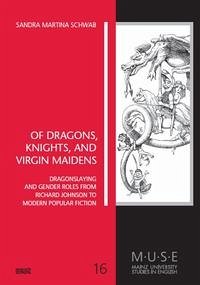Dragons and other creatures of the imagination were frowned upon by the European Enlightenment with its focus on rational thought and empirical evidence. For decades they slumbered in archives and libraries or stole away to live in the literature of the common people – in folktales, chapbooks, and street ballads. From the mid-eighteenth century onwards, though, so-called folk literature garnered new interest, while at the time the appeal of medieval architecture and literature was rediscovered. The gothic revival eventually became a powerful torrent that affected many areas of culture and society. It not only led to a re-evaluation of medieval literature, but also to a processing of themes and motifs from medieval romances, fairy tales, and local legends in nineteenth-century art and literature. One narrative pattern which has remained popular with authors and artists since the Middle Ages is the heroic dragonslayer story. It appears in medieval literature, in neochivalric romances, in folk literature, fantasy fiction and popular romance, among others. As Schwab’s study will make apparent, the story of the dragonslayer has undergone significant transformations, many of which are connected to major social and cultural changes that took place within the last 400 years. Especially in regard to gender roles, the dragonslayer story can serve as an example of how art and literature mirror social actualities of their times.
Bitte wählen Sie Ihr Anliegen aus.
Rechnungen
Retourenschein anfordern
Bestellstatus
Storno

